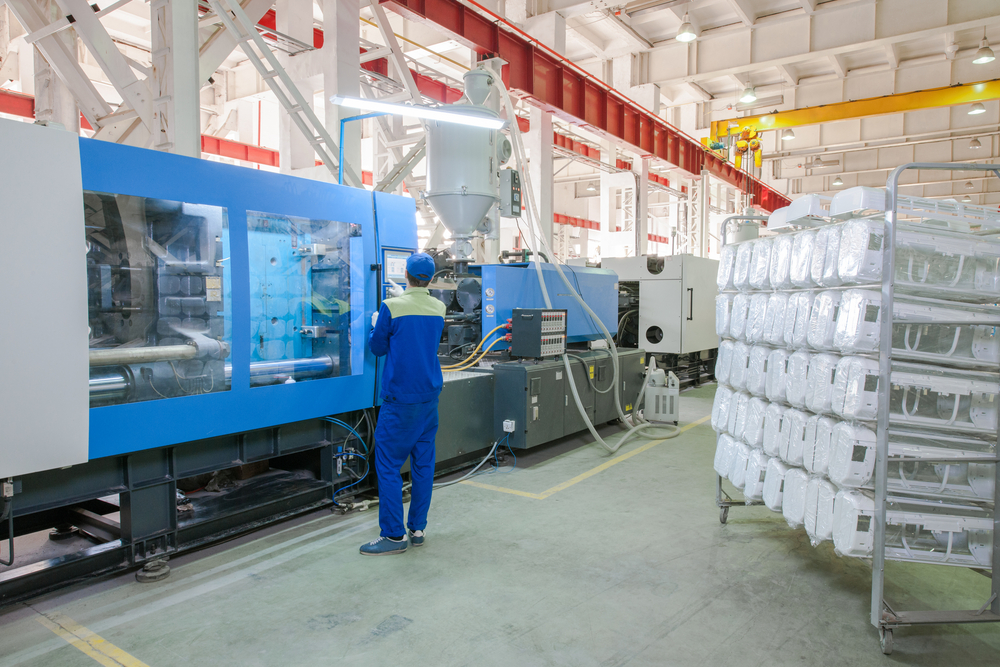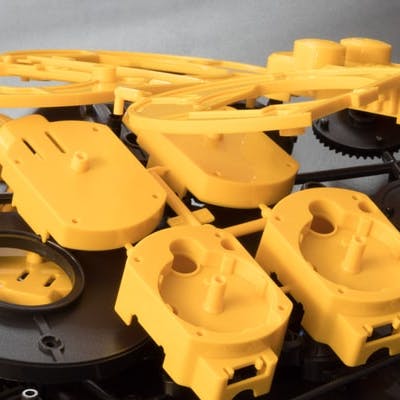The Impact of Plastic Injection Molding on Decreasing Production Costs and Waste
The Impact of Plastic Injection Molding on Decreasing Production Costs and Waste
Blog Article
Understanding the Essentials of Plastic Injection Molding Processes
Plastic injection molding serves as a cornerstone of modern-day production, giving a systematic method to creating complicated elements with precision. This process not only includes the fundamental steps of melting and infusing products into mold and mildews but also includes a nuanced understanding of numerous affecting elements, such as temperature and stress. As industries increasingly demand effectiveness and top quality, the intricacies of this method end up being extra critical. Exploring these important components could disclose just how even minor adjustments can result in substantial renovations in manufacturing end results, questioning regarding the capacity for development in this well-known procedure.
What Is Plastic Injection Molding?
Plastic injection molding is a widely made use of production procedure that changes thermosetting and polycarbonate materials into specific and complicated shapes. This technique is favored for its capacity to create high volumes of similar components with phenomenal precision, making it an indispensable method in various industries, consisting of automobile, durable goods, and clinical gadgets.
The procedure entails thawing the chosen plastic material and injecting it right into a mold under high pressure. The mold and mildew, developed to the requirements of the preferred component, allows the molten plastic to materialize as it cools down and solidifies. As soon as the material has actually hardened, the mold is opened, and the finished component is ejected.
Plastic injection molding offers numerous benefits, including minimized waste, consistency in production, and the capability to incorporate detailed designs that might be challenging with other manufacturing approaches. In addition, it supports a wide array of products, each giving one-of-a-kind homes that can be tailored for particular applications. As sectors remain to introduce, plastic injection molding continues to be at the forefront, making it possible for the development of advanced items that satisfy developing customer needs.
The Injection Molding Process
The injection molding procedure is a sophisticated strategy that involves numerous vital phases to create high-quality plastic parts. Plastic pellets are fed right into a heated barrel where they are melted right into a thick liquid. This molten plastic is after that infused under high pressure right into a precision-engineered mold, which shapes the product right into the preferred form.
When the mold is filled, the plastic is enabled to cool down and strengthen, taking the shape of the mold tooth cavity. Air conditioning time is critical, as it influences the cycle time and the last homes of the molded part. After adequate cooling, the mold and mildew opens up, and the ended up component is ejected utilizing ejector pins.
Materials Utilized in Shot Molding
Different products can be utilized in the injection molding process, each offering one-of-a-kind homes that cater to certain applications. One of the most typically used products consist of thermoplastics, thermosetting plastics, and elastomers.

Thermosetting plastics, like epoxy and phenolic materials, go through a chemical modification throughout the healing procedure, causing a stiff, inflexible framework. These products are ideal for applications calling for high warmth resistance and structural integrity, typically made use of in vehicle components and electric insulators.
Elastomers, consisting of silicone and rubber-based products, provide versatility and resilience. Their distinct residential properties make them appropriate for applications that demand elasticity, such as gaskets and seals.
Furthermore, specialty products like bio-based plastics and composites are obtaining traction for their ecological advantages and boosted efficiency features, broadening the range of injection molding applications in different markets. Comprehending the residential or commercial properties of these materials is vital for picking the proper kind for particular jobs.
Advantages of Shot Molding
Injection molding sticks out as an extremely reliable production procedure that offers various benefits for generating intricate parts with accuracy. One of one of the most considerable benefits is the capacity to produce intricate designs that would be difficult or challenging to achieve with other methods (Plastic Injection Molding). The process allows for limited resistances and thorough functions, ensuring premium parts
In addition, shot molding is known for its quick manufacturing capacities, why not try here making it an excellent selection for high-volume manufacturing. As soon as the mold and mildew is created, components can be produced quickly, lowering preparations and raising general performance. This efficiency not just reduces production costs but also supplies an one-upmanship on the market.
The adaptability of materials utilized in shot molding further improves its charm. A variety of thermoplastics and thermosetting polymers can be employed, allowing producers to pick materials that finest meet their specific demands, including strength, adaptability, and warmth resistance.
Additionally, the procedure decreases waste, as excess product can often be recycled and recycled. This sustainability element contributes to a lowered environmental effect, making injection molding a responsible manufacturing option. On the whole, the benefits of get more injection molding make it a favored approach for lots of industries.
Aspects Influencing Item High Quality
While various elements can affect item top quality in shot molding, recognizing these components is crucial for accomplishing optimum results. Key elements include product selection, refining specifications, and mold design.
Material selection plays a vital function, as various polymers show distinct buildings that affect flowability, toughness, and thermal security. Insufficient material option can result in issues such as bending or insufficient filling.
Processing parameters, consisting of temperature level, cycle, and stress time, must be thoroughly controlled. Variations in these settings can lead to incongruities partially dimensions and surface area finish. Exceedingly high temperatures may create deterioration of the polymer, while inadequate pressure can result in brief shots.
Mold design is just as important, as it identifies the circulation of the molten plastic and the cooling process. Badly made mold and mildews might cause irregular air conditioning prices, leading to dimensional mistakes and residual anxieties.

Final Thought
Finally, plastic shot molding works as an essential production process that makes it possible for the efficient manufacturing of high-grade parts. Mastery of the injection molding procedure, including the understanding of products and the impact of various variables on item quality, is vital for attaining optimal outcomes. The benefits of this method, such as cost-effectiveness and design adaptability, more highlight its significance throughout several sectors, strengthening its standing as a favored option for high-volume manufacturing.
Plastic injection molding offers as a keystone of Website modern production, giving a systematic approach to creating intricate parts with accuracy.Plastic shot molding provides a number of advantages, including decreased waste, consistency in production, and the capability to incorporate complex designs that may be challenging with various other making methods (Plastic Injection Molding). As industries continue to introduce, plastic shot molding remains at the forefront, enabling the advancement of innovative products that satisfy developing consumer needs
The shot molding process is an innovative technique that entails a number of crucial phases to generate high-quality plastic elements.In final thought, plastic injection molding serves as a crucial production process that allows the effective manufacturing of high-quality components.
Report this page